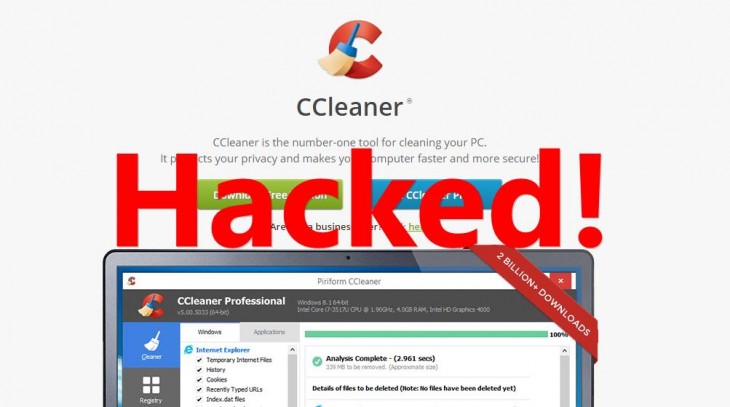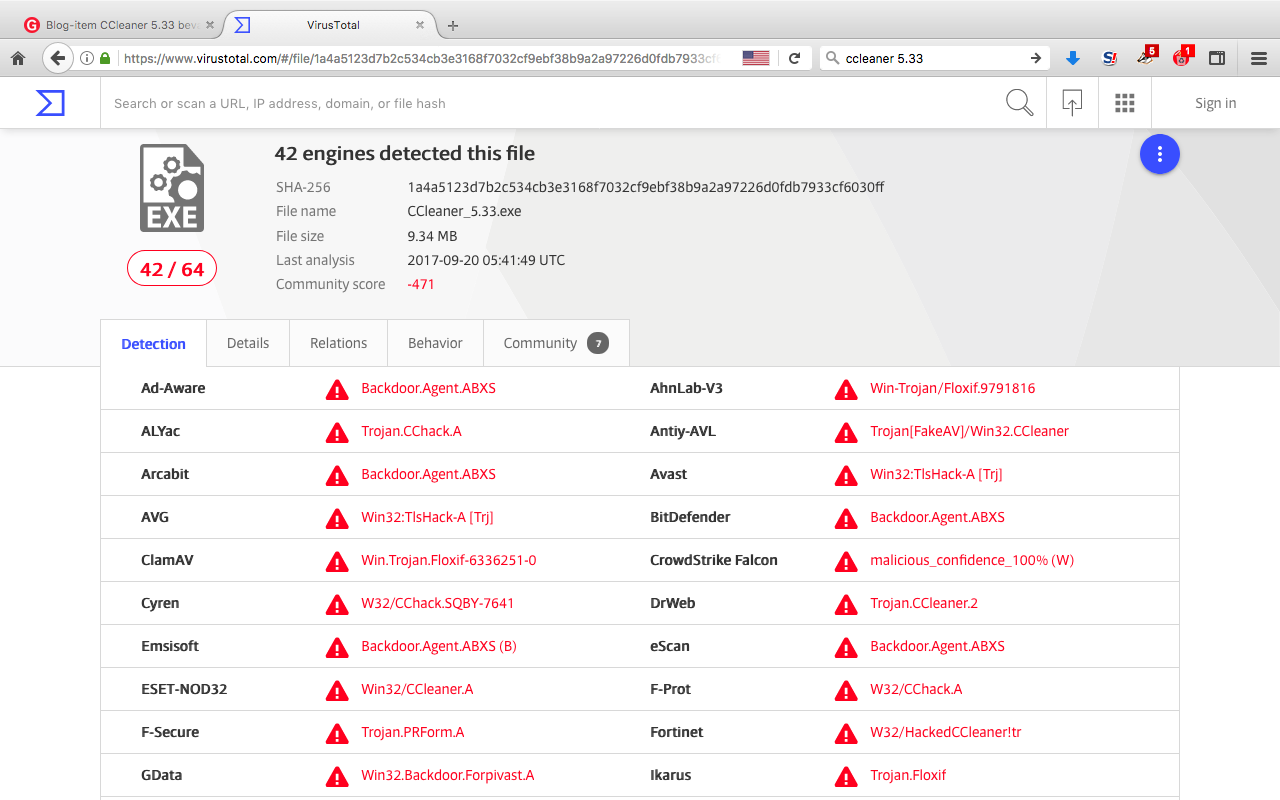

- #Ccleaner malware remove how to
- #Ccleaner malware remove install
- #Ccleaner malware remove software
- #Ccleaner malware remove mac
- #Ccleaner malware remove windows
In that folder, we check at the right if we can see any value with the name MUID, TCID, or NID.Ī clean version of CCleaner won't generate those values.
#Ccleaner malware remove software
Once we are in the registry editor, we go to the following location: HKEY_LOCAL_MACHINE \ SOFTWARE \ Piriform \ Agomo
#Ccleaner malware remove windows
We press the Windows key along with R to open Run command, and we type "regedit."

Check Windows registryīesides the release version, we can also take a look at our Windows registry and see if we can find any suspicious entries. If we use the cloud version of CCleaner, the virus is in version.
#Ccleaner malware remove install
We can open the program and check in the upper left corner.Įven if we have an older version than 5.33, it is a good idea to update it and install the newly 5.35, which we can download from Piriform's website. The first thing we need to do is look at the version of CCleaner installed on our computer.
#Ccleaner malware remove how to
How to check if the CCleaner malware is on your computerĪlthough we are not at risk, even with version 5.33, it is a good idea to locate the malware and remove it - if we got infected in the first place. Of course, Avast disabled the malware server-side, so people that are still using version 5.33, they are entirely safe at least that's what Avast claims in their report. By September 18, the systems still using the infected CCleaner that were affected by the second payload are estimated to be about 730.000. The total number of computers initially affected was around 2.27 million. If we take into account the download rate of CCleaner on Piriform's website, then the number of users infected could be enormous.Īs we can see, the company reports over 2 billion downloads worldwide, and over 5 million installations each week.įortunately, the users that might have been infected are much fewer, as only two of CCleaner's products contained the trojan the 32-bit Windows version and the cloud versions. Among them, we can see Samsung, Sony, and even Cisco. Thus, on September 20th, the Talos team came up with a second analysis of the CCleaner malware.Īmong other things, they state that the primary target of the attackers was a list of famous companies and brands. The next step was to download the second payload to the infected system. The second payloadĪs it seems, the trojan wouldn't stop there. If you're interested in reading Talos' detailed analysis of the CCleaner malware, visit this link. Then, the trojan used a C2 server to upload the information it collected and download the first payload to the user's computer.
#Ccleaner malware remove mac

Now the question is, what did this malware do to the infected machines? Who were its targets? Should we worry?Īs soon as they discovered the problem, Cisco's Talos team analyzed the threat and deducted it was not targeting home users.įor those not familiar with Talos, let's just say that it is a group that gathers information about existing online threats and offers protection from viruses and malware.Īccording to Talos' analysis, the malware was designed to collect the following information: What kind of virus was the CCleaner malware

Avast has also confirmed that the malware is not present on the next CCleaner editions, from 5.34 onwards. Until now, there have been even more updated versions, and CCleaner's most recent is 5.35. In fact, the only difference from is the absence of the trojan. They immediately released version, which was a small update aiming to fix the problematic version. They informed Avast, which took all the necessary steps to suppress the threat. Morphisec was the company that first noticed the problem on September 12th. For four weeks, nobody realized that the program installed a trojan on the user's system. In a scale from 0 to 10, how ironic do you think it is that CCleaner got infected with malware only one month after an antivirus company bought it?Īn antivirus company ending up distributing malware we think it is worth at least an 8.Īnyway, the infected CCleaner version is the , released on August 15th. Avast claims that the hackers must have targeted Piriform long before they bought it, but that doesn't change the fact that the attackers used Avast's servers.


 0 kommentar(er)
0 kommentar(er)
